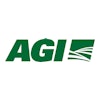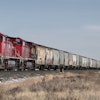Recently, OSHA put grain handling operators “on notice” that it intends to “aggressively pursue” workplace safety violations in the grain handling and storage industries. On August 4, 2010, OSHA Administrator David Michaels sent a letter to over 3,000 grain handling and storage operators warning them that OSHA “will not tolerate” non-compliance with workplace safety standards. A copy of this letter is available athttp://www.osha.gov/asst-sec/Grain_letter.html. In a related press conference, Michaels claimed to be “appalled” at the “outrageously reckless behavior” of some grain storage operators, particularly with respect to allowing workers to enter grain storage facilities without proper equipment, storage and training.
Evidently, this warning was precipitated by the recent suffocation deaths of two teenagers in a grain bin in Illinois. These deaths came on the heels of a series of similar accidents, each of which resulted in a large penalty citation from OSHA:
- In November 2009, OSHA fined a Colorado grain elevator more than $1.5 million following the death of a teenage worker engulfed by grain;
- In May 2010, OSHA fined a South Dakota wheat cooperative more than $1.6 million following the death of a worker engulfed by grain; and
- In August 2010, OSHA fined a Wisconsin grain cooperative $721,000 after a worker was buried up to his chest in frozen soybeans for four hours.
In the warning letter, Michaels specifically directs employers to take the following precautions when workers enter grain storage bins:
- Turn off and lock out all powered equipment associated with the bin, including augers used to help move the grain, so that the grain is not being emptied or moving out or into the bin. Standing on moving grain is deadly; the grain acts like ‘quicksand’ and can bury a worker in seconds. Moving grain out of a bin while a worker is in the bin creates a suction that can pull the workers into the grain in seconds.
- Prohibit walking down grain and similar practices where an employee walks on grain to make it flow.
- Provide all employees a body harness with a lifeline, or a boatswains chair, and ensure that it is secured prior to the employee entering the bin.
- Provide an observer stationed outside the bin or silo being entered by an employee. Ensure the observer is equipped to provide assistance and that their only task is to continuously track the employee in the bin.
- Prohibit workers from entry into bins or silos underneath a bridging condition, or where a build-up of grain products on the sides could fall and bury them.
- Test the air within a bin or silo prior to entry for the presence of combustible and toxic gases, and to determine if there is sufficient oxygen.
- Ensure a permit is issued for each instance a worker enters a bin or silo, certifying that the precautions listed above have been implemented.
OSHA also indicates an intention to step up criminal enforcement and inspections. In his letter, Michaels cautions that if an employee dies in a grain storage facility, OSHA may refer the incident to the Department of Justice for criminal prosecution under the criminal provisions of the Occupational Safety and Health Act of 1970. Michaels has also indicated that OSHA intends to initiate inspection programs targeting grain facilities in the Midwest and Great Plains states. In the face of this stepped up enforcement, it is important for grain facilities to be aware of the OSHA standards applicable in the industry.
While Michaels’ letter focuses on worker safety while in grain storage bins, many other workplace safety requirements apply to grain handling facilities as well (and will likely also be subject to increased scrutiny). Some of these applicable requirements are discussed briefly below.
Preventative Maintenance and Inspection
All mechanical and electrical equipment must be kept in proper operating condition. The employer must annually inspect the mechanical and safety control equipment associated with dryers, grain stream processing equipment, dust collection equipment (including filter collectors), and bucket elevators.
All equipment must be lubricated and maintained according to manufacturers’ recommendations, or as necessary. Equipment that malfunctions or operates below desired efficiency must be promptly repaired or removed from service. Repairs and inspections of equipment must be properly logged.
All employees who repair, service and operate equipment must be familiar with the employer’s locking out and tagging out procedures.
Housekeeping
Employers must develop and implement a written housekeeping program that prevents combustible material from accumulating. According to OSHA, grain dust is the main source of fuel for explosions in grain handling facilities. The use of compressed air to remove grain dust is only permitted when all machinery that presents a source of ignition in the area is shut down, and all other known potential ignition sources are removed or controlled.
The written program must include:
- Frequency and methods of reducing dust accumulations on ledges, floors, equipment, and other exposed surfaces;
- Identification of “priority” housekeeping areas known to be potential sources of ignition, including:
-
- Floor areas within 35 feet of inside bucket elevators;
- Floors of enclosed areas containing grinding equipment; and
- Floors of enclosed areas containing grain dryers located inside the facility.
- Methods for immediate removal of grain dust in excess of 1/8 inch in priority areas, or assurance that equivalent protection is provided; and
- Methods for removing grain (not dust) and product spills from work areas.
Emergency Action Plan Requirements
Employers must develop and implement a written emergency action plan available to employees for review (unless the employer has ten or fewer employees, in which case the plan may be communicated orally). The plan must include, at a minimum, procedures for the following:
- Reporting a fire or other emergency;
- Emergency evacuation, including exit route assignments;
- Employees who remain to operate critical plant operations before evacuating;
- Accounting for all employees after evacuation; and
- Employees performing rescue or medical duties.
The plan must also include the name or job title of employees who may be contacted with questions about the plan.
Alarm System
Employers must have and maintain an employee alarm system with a distinctive signal for each purpose.
Employee Safety Training
Employees must receive safety training at least annually and when changes in job assignments will expose them to new hazards. All employees must be trained in at least the following:
- General safety precautions, including recognition and preventative measures for the hazards related to dust accumulations and common ignition sources such as smoking; and
- Specific procedures and safety practices applicable to their job tasks, including housekeeping procedures, hot work procedures, preventative maintenance procedures, and lock-out/tag-out procedures.
Employees assigned special tasks, such as bin entry and handling of flammable or toxic substances, must be provided training to perform these tasks safely.
Hot Work
Employee performing “hot work,” including electric or gas welding, cutting, brazing or similar flame-producing work, must use a permit system. This is to ensure that the employer is aware of hot work being performed and that appropriate safety precautions are taken. (The required safety precautions can be found in 29 C.F.R. § 1910.252(a), but are outside the scope of this article.)
The permit system is not required:
- Where the employer or employer’s representative (who would otherwise authorize the permit) is present while the hot work is being performed;
- In welding shops authorized by the employer; and
- In hot work areas authorized by the employer which are located outside of the grain handling structure.
In light of OSHA’s recent comments and increased scrutiny of the grain industry, operators would be wise to review safety policies and ensure that they are in compliance with all applicable requirements. The above requirements are provided as examples only of the types of workplace safety requirements imposed on grain handling operations. This articles does not, and is not intended to, summarize all safety requirements applicable to grain operations. Among other things, it does not consider state and other laws, which may impose worker safety requirements above and beyond those imposed by federal OSHA. For specific guidance, consult an attorney. For more information, visit the below websites.





















